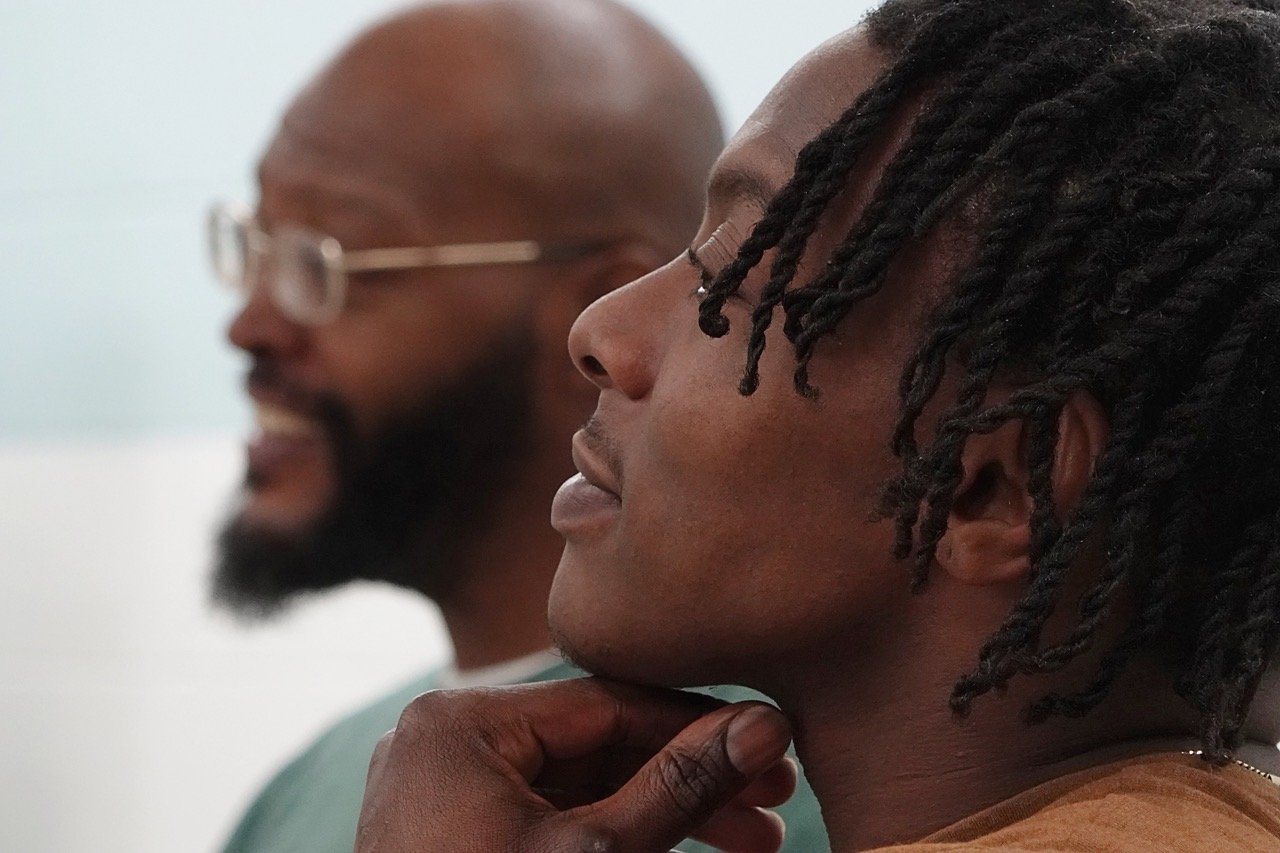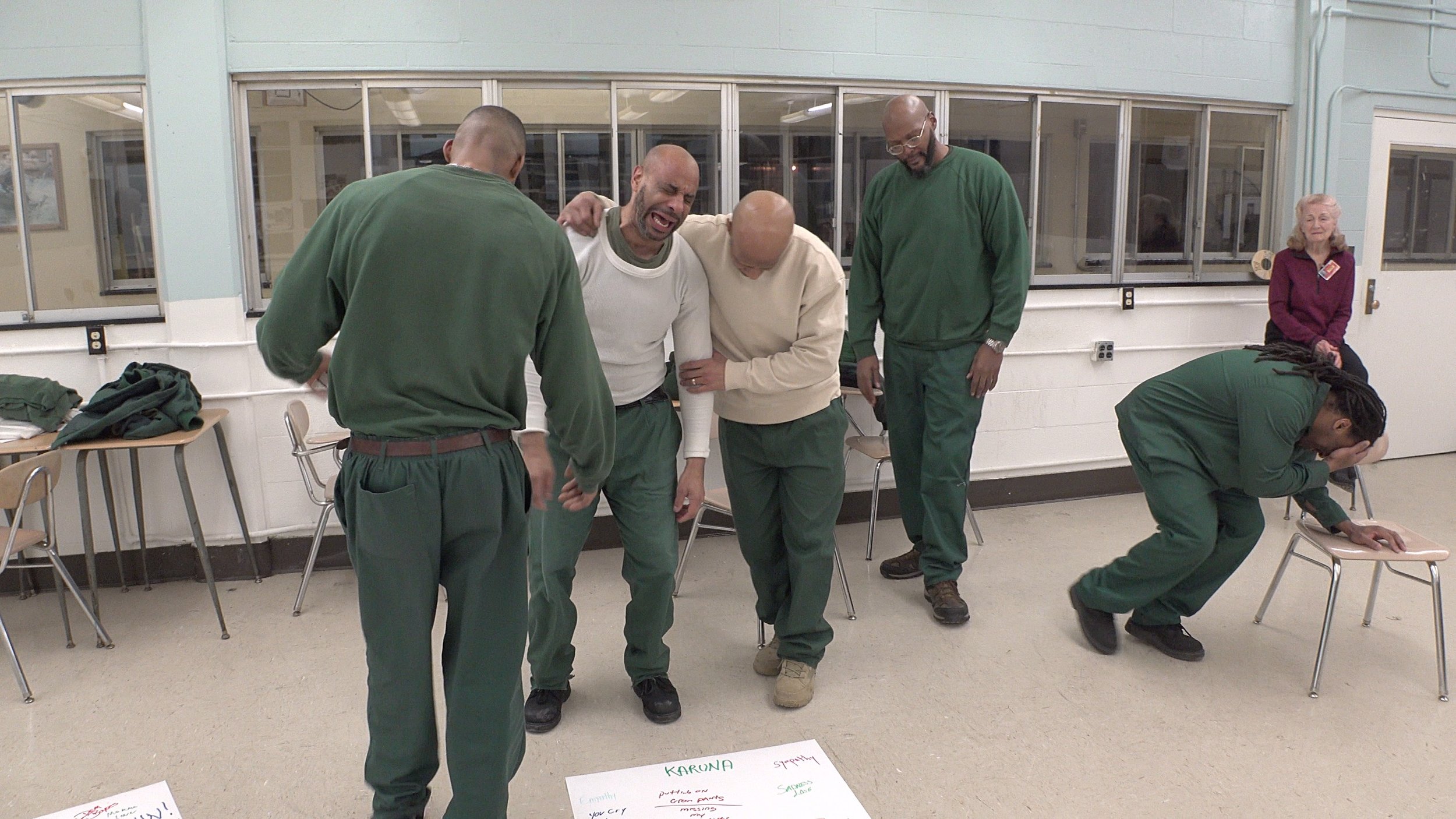PPTG Workshop
Photos by Peter Carroll
PPTG’s cycle of workshop training runs weekly, year-round for two years and culminates in a live performance of original devised theatre before an invited audience at Auburn Correctional Facility. There are several phases in the Workshop process that include theatre games, Characterology, Rasa Boxes, Improvisation, text work, voice, diction, movement, writing and devising. The Workshop is considered a “safe space” where the members can collaborate on their progress toward transformation and share their journeys, struggles, and discoveries together.
After the performance, the members evaluate the two-year process, suggest amendments or changes, and then start the process of inviting a new cohort to join the workshop. The cycle of training begins again with the continuing members collaborating with facilitators to mentor the new invited cohort. While a member is residing at Auburn, they continue to attend the weekly workshop, sometimes completing the cycle several times. It is the accumulated wisdom of the continuing members that is central to PPTG’s effectiveness.
PPTG is unique because it is a grassroots program developed by and for incarcerated persons in a maximum-security prison. It is a transformative theatre community, utilizing theatre to reconnect incarcerated people to their full humanity. By allowing justice impacted individuals the chance to use their bodies and emotions in ways not usually permitted in prisons, participants are encouraged to stretch outside the paradoxically uncomfortable comfort zone of a punitive system, and to reach their full potential as human beings—both in the eyes of the non-justice impacted society and of the participants themselves.
“One of the group’s key concepts, transformation, works in two directions: It originates within the participants to repair and restore the aspects of their humanity fractured by the justice system, and at the same time it works from without, helping to alter public perception of the people reductively marked ‘criminal.’”¹
For additional insight into PPTG and its process see the following articles in the Press Section of the website:
¹Rehearsing Transformation in an American Prison by Nick Fesette and Bruce Levitt, quotes from which appear in the introduction above.
Phoenix Players Theatre Group: Horizons of Unfreedom: Reflections from Beyond the Wall by PPTG members and facilitators.
Characterology
It is important to know how energy is held in the body. If anxieties are experienced repeatedly, over time, these physical expressions of holding take over the burden of anxiety so we don’t have to deal with it consciously. The physical holdings, frozen anxieties, expressed in the musculature of the body can be seen as lenses through which we see the world. They filter experience to distill life so we can digest only what we perceive as acceptable.
Defenses that are held in the body almost always have lives of their own; they don’t want to be exposed. Another way we can see defenses is as a buffer between inner and outer worlds. As a framework with which to organize the material through which to explore these defenses that are habitually used to some extent, the attached material outlines the five basic character structures used in the study of bioenergetics.
Character structure does not help a person define who they OR OTHERS are. IT DESCRIBES THE WAY PEOPLE DISTORT WHO THEY ARE. Character defenses were built from the time an individual was very young. They have been useful to us in defending ourselves in situations that that we could find no other way to handle when we were young. A character structure defense is the result of feeling unsafe.
Dr. Alexander Lowen, who studied with Dr. Wilhelm Reich, evolved them from the standard terms. Each type has a special pattern of defense on both the psychological and the muscular levels that distinguishes it from other types. View here.
The men of PPTG use Characterology to understand that the behavior of others toward them is not of their doing, but rather a product of the “characterology” of the other individual.
Rasaboxes
Rasa is a Sanskrit term, which can be translated as “JUICE” or “FLAVOR.” The term is also used in an ancient Vedic book from the Hindu tradition to describe the known Emotional Categories.
This training is based on information from the Natya Shastra, an ancient treatise describing training for the performing arts. Created by Richard Schechner and developed by Paula Murray Cole, Michele Minnick and others, Rasa Boxes offers participants concrete physical tools to access, express, and manage feelings/emotions within the context of performance. Rasaboxes is a modern adaptation for training actors to become “athletes of the emotions.” PPTG members extend the use of Rasa Boxes to include the understanding of their own emotional lives and the emotions directed toward them by others.















































